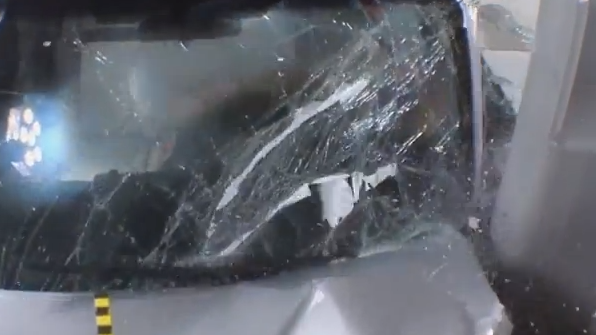Consumer Reports Pulls Recommendations For 3 Toyotas & An Audi Over Crash-Test Results
 Our cohorts at Consumer Reports do an awful lot of testing on the cars they rate, but one thing they can’t do is crash-testing. That’s why, following the results of recent crash tests from the Insurance Institute for Highway Safety (better known as the people that crash cars into walls), CR has pulled its recommendations on three Toyota models and one Audi vehicle.
Our cohorts at Consumer Reports do an awful lot of testing on the cars they rate, but one thing they can’t do is crash-testing. That’s why, following the results of recent crash tests from the Insurance Institute for Highway Safety (better known as the people that crash cars into walls), CR has pulled its recommendations on three Toyota models and one Audi vehicle.
CR’s criteria for recommending vehicles has long required that a model score well in the magazine’s tests, have average or better reliability, and perform adequately in crash tests performed by the IIHS and others.
The IIHS has been ramming cars into walls from various angles for years, but in 2012 it instituted what it calls the “small overlap” test, designed to see what happens when only the front corner of the vehicle is impacted. It has taken a while for the IIHS to build up enough test results for CR to factor small overlap into its recommendations, but now that the Institute has put more than 60 models through the small overlap smashing, the magazine is revising the recommendations for three popular vehicles that tested poorly: Toyota’s Camry, Prius V, and RAV4, and the Audi A4.
The Prius V was among the first cars given a poor rating in the small overlap test. It and the Camry are the only vehicles in the “Midsize moderately priced cars” to have received a score of “poor” on this test, which is a shame since both vehicles performed well in all other crash tests.
Similarly, the Audi A4 received all good scores except the poor rating on small overlap. It and the Lexus IS 250/350 are currently the only cars in its class to receive the red P of doom.
The RAV 4 is one of many in vehicles in the Small SUV class to receive a “poor” on the small overlap test. Others include the Buick Encore, Ford Escape, Hyundai Tucson, Jeep Patriot, and Kia Sportage.
The reason that small overlap is such a concern is that around 1-in-4 frontal collisions involving a fatality or serious injury are the result of the car striking only on the corner of the vehicle. See, while the frames of most vehicles are now designed to crumple when colliding head-on — thus absorbing some of the impact and minimizing damage to the people inside the vehicle — this doesn’t always work in a small overlap crash, meaning a smaller collision could result in severe injuries.
Keep in mind that a vehicle can still be labeled a “Top Safety Pick” from the IIHS if it fails the small overlap test. Cars that do well in all crash tests, including small overlap, are given the additional honor of being labeled a “Top Safety Pick+,” so keep that in mind when you’re looking for a new car.
While only about 20% of the vehicles run through the small overlap test have received a rating of “good,” it’s worth noting that cars introduced in years to come will be designed with the small overlap test in mind, so hopefully the percentage of failing vehicles will decrease significantly.
Below is a video from IIHS showing some of the testing and explaining the importance of the small overlap test:
Want more consumer news? Visit our parent organization, Consumer Reports, for the latest on scams, recalls, and other consumer issues.

